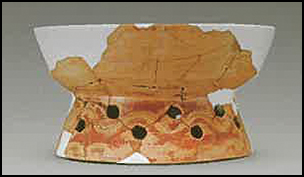Crossref Citations
This article has been cited by the following publications. This list is generated based on data provided by
Crossref.
Pawlik, Alfred
Crozier, Rebecca
Fuentes, Riczar
Wood, Rachel
and
Piper, Philip
2019.
Burial traditions in early Mid-Holocene Island Southeast Asia: new evidence from Bubog-1, Ilin Island, Mindoro Occidental.
Antiquity,
Vol. 93,
Issue. 370,
p.
901.
Lam, Thi My Dzung
Nguyen, Thi Thuy
Tran, Thi Kim Quy
Bellwood, Peter
Higham, Charles
Petchey, Fiona
Grono, Elle
Nguyen, Chieu
and
Piper, Philip J.
2020.
Ru Diep and the Quynh Van culture of central Vietnam.
Archaeological Research in Asia,
Vol. 22,
Issue. ,
p.
100190.
Larena, Maximilian
Sanchez-Quinto, Federico
Sjödin, Per
McKenna, James
Ebeo, Carlo
Reyes, Rebecca
Casel, Ophelia
Huang, Jin-Yuan
Hagada, Kim Pullupul
Guilay, Dennis
Reyes, Jennelyn
Allian, Fatima Pir
Mori, Virgilio
Azarcon, Lahaina Sue
Manera, Alma
Terando, Celito
Jamero, Lucio
Sireg, Gauden
Manginsay-Tremedal, Renefe
Labos, Maria Shiela
Vilar, Richard Dian
Latiph, Acram
Saway, Rodelio Linsahay
Marte, Erwin
Magbanua, Pablito
Morales, Amor
Java, Ismael
Reveche, Rudy
Barrios, Becky
Burton, Erlinda
Salon, Jesus Christopher
Kels, Ma. Junaliah Tuazon
Albano, Adrian
Cruz-Angeles, Rose Beatrix
Molanida, Edison
Granehäll, Lena
Vicente, Mário
Edlund, Hanna
Loo, Jun-Hun
Trejaut, Jean
Ho, Simon Y. W.
Reid, Lawrence
Malmström, Helena
Schlebusch, Carina
Lambeck, Kurt
Endicott, Phillip
and
Jakobsson, Mattias
2021.
Multiple migrations to the Philippines during the last 50,000 years.
Proceedings of the National Academy of Sciences,
Vol. 118,
Issue. 13,
Wang, Tianyi
Wang, Wei
Xie, Guangmao
Li, Zhen
Fan, Xuechun
Yang, Qingping
Wu, Xichao
Cao, Peng
Liu, Yichen
Yang, Ruowei
Liu, Feng
Dai, Qingyan
Feng, Xiaotian
Wu, Xiaohong
Qin, Ling
Li, Fajun
Ping, Wanjing
Zhang, Lizhao
Zhang, Ming
Liu, Yalin
Chen, Xiaoshan
Zhang, Dongju
Zhou, Zhenyu
Wu, Yun
Shafiey, Hassan
Gao, Xing
Curnoe, Darren
Mao, Xiaowei
Bennett, E. Andrew
Ji, Xueping
Yang, Melinda A.
and
Fu, Qiaomei
2021.
Human population history at the crossroads of East and Southeast Asia since 11,000 years ago.
Cell,
Vol. 184,
Issue. 14,
p.
3829.
Dai, Jinqi
Cai, Xipeng
Jin, Jianhui
Ge, Wei
Huang, Yunming
Wu, Wei
Xia, Taoqin
Li, Fusheng
and
Zuo, Xinxin
2021.
Earliest arrival of millet in the South China coast dating back to 5,500 years ago.
Journal of Archaeological Science,
Vol. 129,
Issue. ,
p.
105356.
Zhu, Simei
Li, Fajun
Chen, Xianglong
Fu, Xianguo
and
Hu, Yaowu
2021.
Subsistence and health in Middle Neolithic (9000–7000 BP) southern China: new evidence from the Dingsishan site.
Antiquity,
Vol. 95,
Issue. 379,
p.
13.
Pinhasi, Ron
and
Douka, Katerina
2021.
Before and after farming: The genetic structure of South China and Southeast Asia.
Cell,
Vol. 184,
Issue. 14,
p.
3597.
Wang, Weiwei
Nguyen, Kim Dung
Dang Le, Hai
Zhao, Chunguang
Carson, Mike T.
Yang, Xiaoyan
and
Hung, Hsiao-chun
2022.
Before Rice and the First Rice: Archaeobotanical Study in Ha Long Bay, Northern Vietnam.
Frontiers in Earth Science,
Vol. 10,
Issue. ,
Vlok, Melandri
Buckley, Hallie R.
Domett, Kate
Willis, Anna
Tromp, Monica
Trinh, Hiep H.
Minh, Tran T.
Mai Huong, Nguyen T.
Nguyen, Lan Cuong
Matsumura, Hirofumi
Huu, Nghia T.
and
Oxenham, Marc F.
2022.
Hydatid disease (Echinococcosis granulosis) diagnosis from skeletal osteolytic lesions in an early seventh‐millennium BP forager community from preagricultural northern Vietnam.
American Journal of Biological Anthropology,
Vol. 177,
Issue. 1,
p.
100.
Zuo, Xinxin
Dai, Jinqi
Wu, Wei
Jin, Jianhui
Ge, Wei
Wang, Yinping
Ren, Lin
Lin, Yingjun
Pei, Yaoyao
and
Xie, Hui
2022.
Microfossil evidence of rice cultivation on the Southeast China Coast 7500 years ago.
Science China Earth Sciences,
Vol. 65,
Issue. 11,
p.
2115.
左, 昕昕
戴, 锦奇
吴, 卫
靳, 建辉
葛, 威
王, 银平
任, 琳
林, 映君
裴, 瑶瑶
and
谢, 辉
2022.
东南沿海地区7500年前水稻种植的微体化石证据.
SCIENTIA SINICA Terrae,
Vol. 52,
Issue. 12,
p.
2403.
Deng, Zhenhua
Huang, Bixiong
Zhang, Qianglu
and
Zhang, Min
2022.
First Farmers in the South China Coast: New Evidence From the Gancaoling Site of Guangdong Province.
Frontiers in Earth Science,
Vol. 10,
Issue. ,
Hung, Hsiao-chun
Tsang, Cheng-hwa
Deng, Zhenhua
Bolunia, Mary Jane Louise A.
Santiago, Rey A.
Carson, Mike T.
and
Bellwood, Peter
2022.
Preceramic riverside hunter-gatherers and the arrival of Neolithic farmers in northern Luzon.
Antiquity,
Vol. 96,
Issue. 388,
p.
848.
Wang, Jiajing
2023.
A Posthumanist Approach to the Origins of Rice Agriculture in Southern China.
Current Anthropology,
Vol. 64,
Issue. 3,
p.
242.
Liu, Xiaodi
Ren, Meng
Fu, Yongxu
Hu, Yaowu
Wang, Shuzhi
and
Yang, Yimin
2023.
New insights into the use of Neolithic pottery in Guangxi of South China: organic residue analysis of experimental and archaeological pottery.
Heritage Science,
Vol. 11,
Issue. 1,





